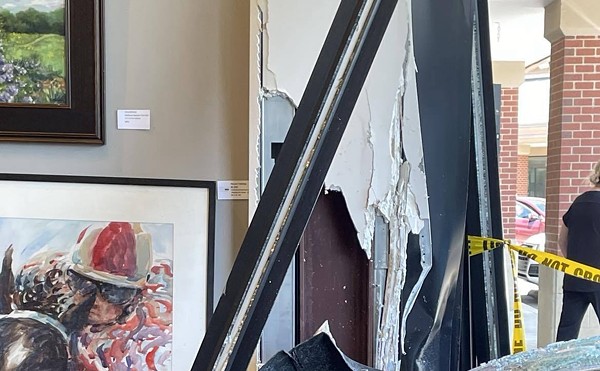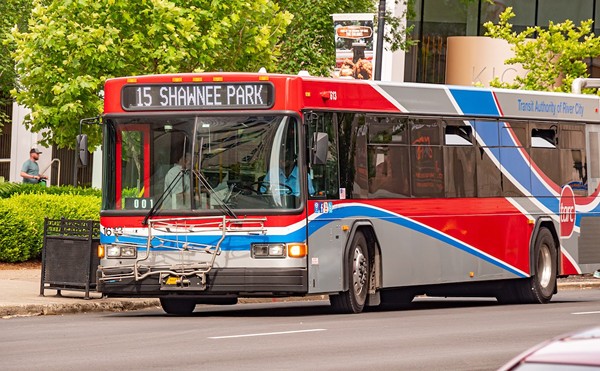
mayor
Stepping into his second term as Metro mayor and his 16th overall year at Louisville’s helm, Abramson gave a speech at his inauguration last Thursday that peered forward, hitting on the major themes of his first term without divulging much detail: downtown development, making Louisville a regional destination and business partner, workforce development and education, and some of the major infrastructure projects on the horizon, like the downtown arena and the Bridges Project.
The speech’s lack of detail is understandable and forgivable — it’s a verifiable reality that Louisville is on the precipice of some kind of big change, or perhaps even in its midst. That list is long.
Mayor Abramson gave LEO some phone time last Friday afternoon, getting candid as the New Year loomed. As his time was limited, the discussion necessarily remained focused on his core issues.
LEO: What are some of the businesses you’d like to see, or the types of businesses, come to downtown?
Jerry Abramson: Well, the success of the entertainment and restaurant venues, I think the next expansion of that type of development will probably be retail, maybe a different type of entertainment, the entertainment might be focused on a little older crowd than the initial development of Fourth Street Live. I think you’ll see retail — we’re finally getting return calls from big-box stores interested in downtown because they’re now beginning to see enough residential rooftops. You’re going to see some niche marketing retail coming in for men’s and women’s. That’s our focus, at least.
LEO: What do you think needs to happen to bring this critical mass downtown?
JA: Not what needs to happen, what’s happening is the rooftops are becoming more residential in nature, joining with the existing office rooftops. As the downtown picks up another 17-, 1,800 units of housing (Editor’s note: There are currently 1,800 residential units downtown; the Abramson administration expects that to double by the end of 2008.), as the lofts and the affordable housing, along with the gleaming glass condos come online, then all of a sudden you have opportunities for neighborhood retail, just as you would have on Bardstown Road or Preston or Brownsboro Road or Frankfort Avenue or Dixie Highway.
LEO: I think that’s been one of the biggest questions in conversations I’ve had with people all over the city: Which comes first?
JA: I’ll give you the answer based on what retailers tell me: Residential rooftops come first. Retail never leads.
LEO: It’s also been my experience that one of the perceptions about the redevelopment of downtown is that a lot of the residential is for high-income.
JA: I don’t think that’s true. I think the residential that’s more visible is obviously the more expensive high-rise condominiums. But depending on where you begin the downtown, and Steve Poe and his investment group would tell you

mayor
LEO: Is it an inevitable thing, when you’re looking at these kinds of transformations, that a lot of it is available to a certain income level?
JA: The higher you construct a building, the more it costs. And the more it costs, the more you’ve got to get per square foot if you sell it or if you rent it. So the high-rises, by definition, will always be more expensive.
LEO: What is your concept of affordable market-based housing?
JA: I think you’ll find condos in the downtown will probably be around, I think the Mercantile building, top are coming in around 140, 160

mayor
LEO: Do you worry there could be some negative effects here, like more stratification?
JA: I don’t see that. The concern I have is making sure we can provide the appropriate public services in a geographic area that for decades has not had any significant housing. That’s my issue as mayor of this community. All the seeds that we have planted over the last 20, 25 years are now coming up to make downtown a more attractive place to live. The confluence of that with the baby boomers aging creates an opportunity for demand. It’s not only happening here — it’s happening in major cities like Louisville all around the country.
LEO: What about the Affordable Housing Trust Fund — the

mayor
JA: I’m very supportive of the concept and trying as best we can to figure out the best way to create a revenue stream. I was most hopeful that the state would’ve allowed the extra fee

mayor
LEO: What do you expect to see on the arena front?
JA: I expect to see Humana’s building come down. I see this year being the year when the LG&E stuff, because I’m not sure what it is

mayor
LEO: What do you expect to see in ’07 on the Bridges Project?
JA: I hope we’ll be able to clearly understand that the sooner we build them the cheaper they are, and that we have a financing mechanism to build the two bridges plus the reconstruct of Spaghetti Junction. That’s nailed down with everybody signing on on both sides of the river, and at the state and federal level.
LEO: LEO has come down on a different side of this issue than your administration —
JA: Oh, yeah? Where is LEO?
LEO: LEO has supported 8664.
JA: Oh, well that’s great. OK, go ahead.
LEO: I’ll let you finish if you’d like.
JA: I appreciate the idealism of the leadership of the initiative, and I appreciate the aesthetic aspect of what the beauty of connecting the city to the water’s edge would be without 64. But unfortunately, aesthetics can’t be the basis for my decision, and when you look at the models that were done in the late ’90s, before a billion dollars of investment was going on downtown; when you look at the Southern Indiana legislative folks and congressional folks saying no way are you going to put all the traffic going across the East End bridge to require us to expand 269

mayor

mayor
We’ve just got to move on. At some point, as I’ve told the

mayor
LEO: One of the things I’ve been told, when I’ve asked officials with the Bridges Project about it, is — I’ve been told two things: It’s already been studied and it’s off the table, or that

mayor
JA: I’d go with the first one, and I’d add to it the Southern Indiana legislators, congressmen and the state reps, because they’re not for it, and United States senators as well as congressmen, they’re not for it in terms of the effect it’s going to have on their communities. With them not for it, with the Federal Highway Department saying in black and white it’s not going to happen, we need to get about ensuring we get these two bridges and the reconstruct done in a time period that will not have a negative effect on economic growth in the region. The Waterfront Development Corporation, David

mayor

mayor
LEO: What would be a more acceptable timetable for you?
JA: Tomorrow. Twenty-five years is unacceptable.
LEO: Where do you think the city stands with Ford?
JA:

mayor

mayor
LEO: Yes, sir, born and raised.
JA: How old are you?
LEO: I’m 25.
JA: If I were your age, I’d have an 8664 sign, too — what the hell? I really love idealism and I was there. My problem is I’ve got to deal with reality.
Contact the writer at
[email protected]





